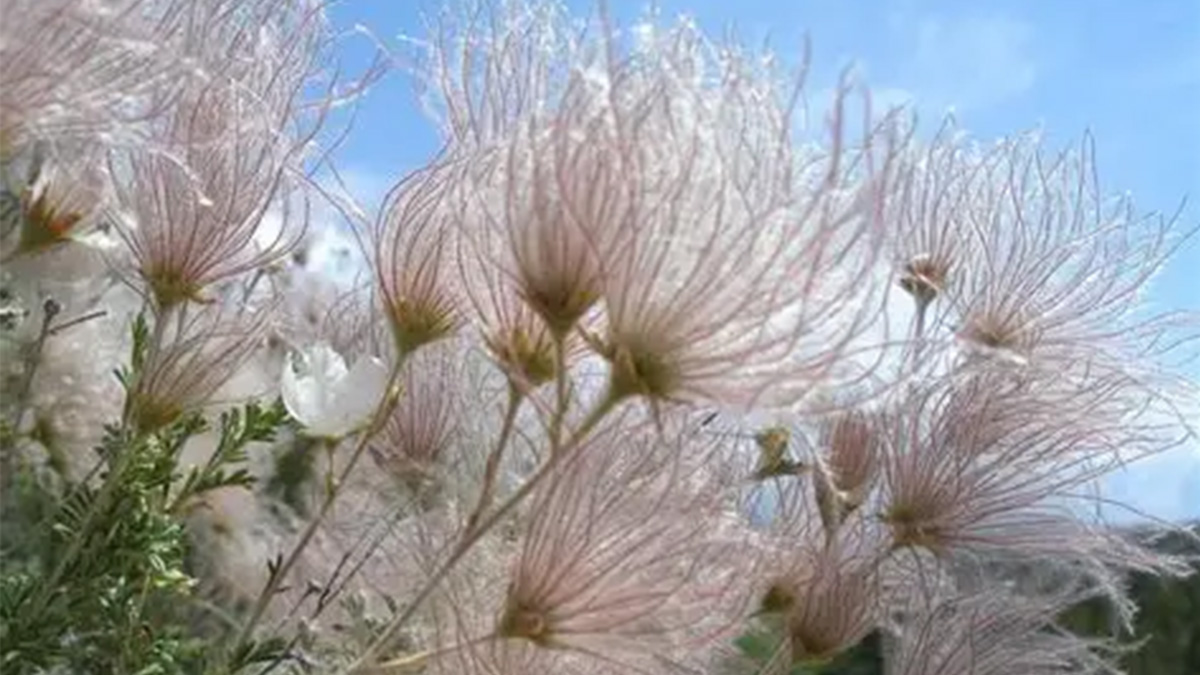Perennials:
- Agastache rupestris (Sunset Hyssop): Fragrant orange-pink blooms that attract hummingbirds.
- Artemisia (‘Powis Castle’): Silvery-gray foliage adds texture and contrast; highly drought-tolerant.
- Epilobium canum garrettii (Orange Carpet): Low-growing, brilliant orange flowers from midsummer to fall.
- Gaillardia aristata (Native Blanket Flower): Long-lasting red and yellow blooms; excellent for pollinators.
- Geum triflorum (Prairie Smoke Avens): Soft, feathery pink seed heads for texture and interest.
- Liatris punctata (Native Gayfeather): Tall purple spikes that attract butterflies.
- Linum lewisii (Wild Blue Flax): Delicate blue blooms that reappear daily throughout early summer.
- Penstemon varieties: Vertical color in shades from deep red to purple; attracts hummingbirds.
- Solidago rugosa ‘Fireworks’ (Fireworks Goldenrod): Late-season yellow blooms that support pollinators.
- Tanacetum densum amani (Partridge Feather): Low, silvery foliage; excellent for edging or groundcover.
Shrubs:
- Amorpha canescens (Leadplant): Purple flower spikes and silvery foliage; extremely drought-tolerant.
- Arctostaphylos x coloradoensis (Panchito Manzanita): Evergreen with glossy leaves and red stems.
- Ericameria nauseosa (Dwarf Blue Rabbitbrush): Silver foliage with golden-yellow blooms in late summer.
- Fallugia paradoxa (Apache Plume): White flowers followed by fluffy pink seed plumes.
- Prunus pumila besseyi Pawnee Buttes(Creeping Western Sand Cherry): Low-growing shrub with glossy leaves and spring blooms; provides fall color and erosion control.
- Rhus aromatica ‘Gro-Low’ (Fragrant Sumac): Spreads to form dense groundcover; vibrant fall color.
- Ribes aureum (Yellow Currant): Early-spring yellow flowers and edible fruit that attract birds and pollinators.
“When planning a landscape, it is important to consider the microclimates within a property. Sunlight, wind and moisture can vary even within a single yard, creating zones with unique growing conditions,” said Lyndsey Lucia, Senior Water Efficiency Specialist. “A south-facing wall may be hot and dry, while a shaded north side remains cooler and moist.” Understanding these differences helps ensure plants are placed where they’ll thrive with minimal supplemental water.
Lucia recommends selecting plants suited to the climate and accounting for microclimates which creates landscapes that are both resilient and visually appealing. “Thoughtful plant choices reduce water use, cut maintenance costs and enhance the beauty of any property,” she said.
For more Northern Colorado-friendly plant options, explore additional resources such as Plant Select and The Front Range Tree Recommendation List.

